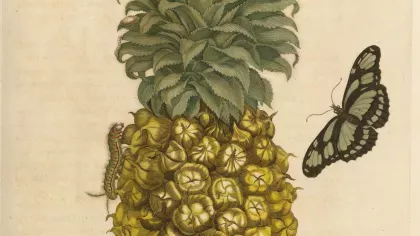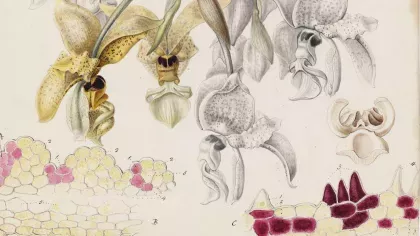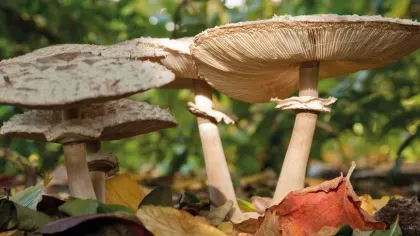27 May 2016
Incredible insects: the life and work of Maria Sibylla Merian
This week’s blog looks at the life and work of Maria Sibylla Merian, pioneering female entomologist and botanical illustrator.

A fascination with natural history
Maria Sibylla Merian was born on 4 April 1647 in Frankfurt am Main. Her father, Matthaeus, an engraver, died when she was only three years old. A year later her mother, Johanna, married the painter Jacob Marrel. It was Marrel who taught Merian how to engrave and paint. In the foreword to her work Metamorphosis Insectorum Surinamensium, Merian tells us that her fascination with natural history, like her interest in painting, began at a young age. From the age of thirteen she kept silkworms and caterpillars and was fascinated by the metamorphoses that they and other insects underwent.
Merian’s first published work was her Neues Blumenbuch of 1675. Although the work does feature insects, they seem less central to the compositions than they are in her later works. Merian’s childhood interest in insect metamorphoses led her to write her book Der Raupen Wunderbare Verwandelung. It was initially published in two volumes (the first in 1679 and the second in 1683), each of which contained fifty engraved plates accompanied by text explaining the habitats and life-cycles of the insects depicted. The portrayals of insects and their host-plants are unprecedented in botanical illustration. Merian worked in watercolours on white vellum, and produced hand-coloured copperplate engravings: the Nuernberg “Painters’ Code” of 1596 excluded women from painting oil still lifes and botanical illustrations, and this remained the case until the 18th century.
Discoveries in Suriname
Following her separation from her husband (the artist Johann Andreas Graff, whom she had married in 1665), Merian moved to Friesland to live with her half-brother, a member of the Labadist sect. It was there that she first saw the exotic butterflies that had been brought back from Suriname, leading her to decide to travel to the country, which she and the younger of her two daughters did in 1699. While there she conducted research into Surinamese caterpillars and the plants that were their habitat. She stayed in Suriname for two years before returning to the Netherlands in 1701. In 1705 the research Merian undertook in Suriname was published as Metamorphoses Insectorum Surinamensium, which was published with sixty engravings, both black and white and hand-coloured. Merian was among the first artists to produce coloured engravings of tropical plants, so the work captured the interest of the scientific community.
Merian's legacy
Merian suffered a stroke in 1715, which left her partially paralysed. She died in Amsterdam on 13 January 1717. Following Merian’s death, her younger daughter Dorothea published a collection of Merian’s writings, which she had translated into Latin and given the title Erucarum ortus. Although her work had begun to attract the interest of collectors in the years leading up to and immediately after her death, Merian fell into obscurity in the 19th century and was only re-discovered in the latter half of the 20th century. In recent years the scientific value of Merian’s work has been recognised, with Germany having placed her on its 500 DM note between 27 October 1992 and 31 December 2001, and Google commemorating the 336th anniversary of her birthday with a Doodle in 2013.
- Francesca Railton -
Library Graduate Trainee


